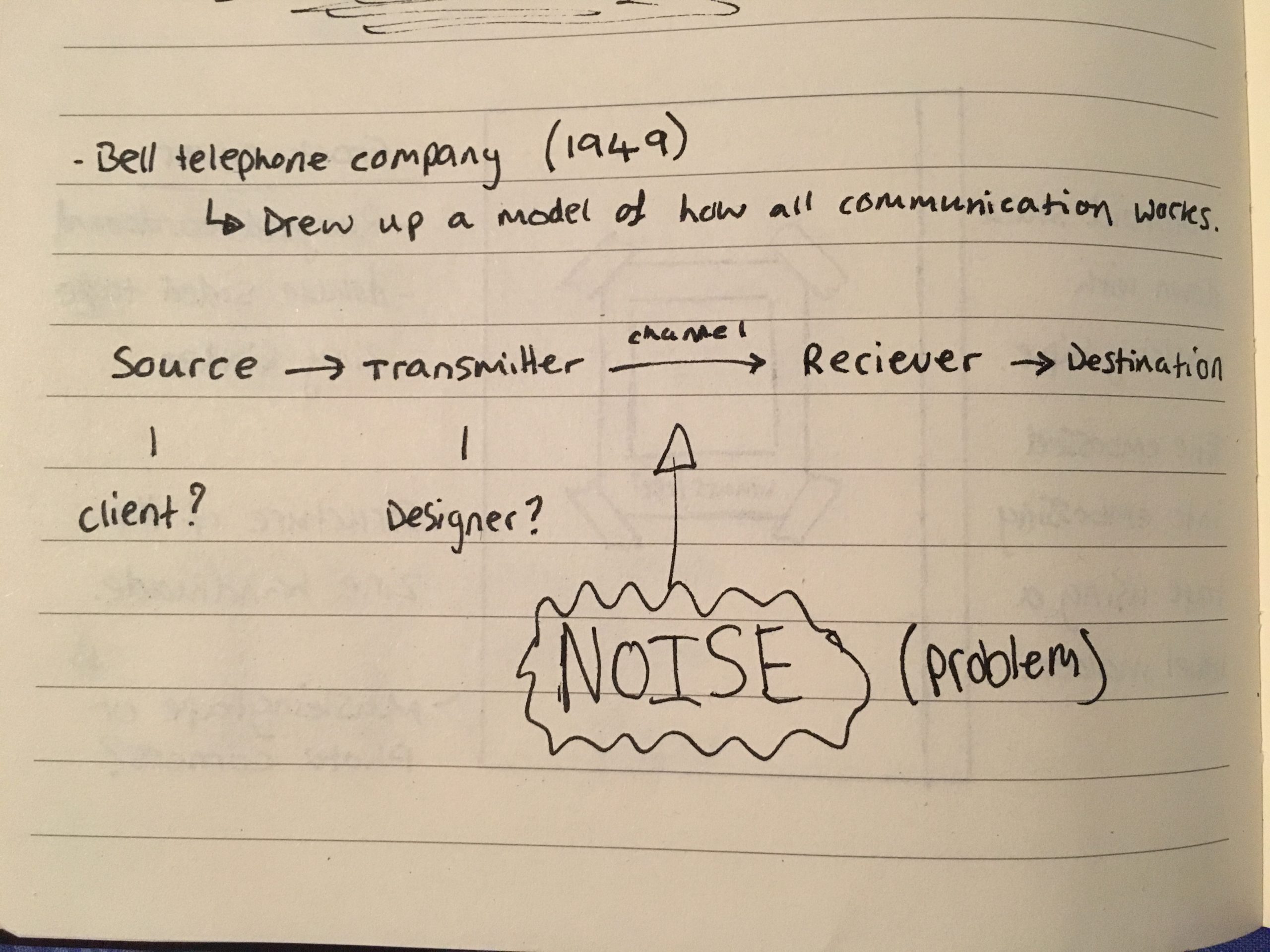Redundancy in Communication
Redundancy in communication occurs when information is repeated unnecessarily, leading to duplication and inefficiency. This article explores the concept of redundancy in communication, examining its causes and potential consequences, while also highlighting strategies to minimize redundant communication in both verbal and written interactions.
By improving our awareness and understanding of redundant communication, we can enhance clarity, streamline processes, and foster more effective communication in various personal and professional settings. As we interact with others on a daily basis, it is essential to ensure that our communication is concise, direct, and free from unnecessary repetition.
Redundancy can arise from several factors, such as a lack of clarity, poor communication habits, or a desire to emphasize a point. Regardless of the cause, redundant communication can hinder productivity, waste time, and create confusion among individuals involved. To address this issue, we will explore practical tips and techniques to identify and eliminate redundancy, thereby promoting efficient and effective communication. By implementing these strategies, we can enhance our overall communication skills and contribute to a more streamlined and productive work environment.
What Is Redundancy In Communication?
Redundancy in communication refers to the practice of repeating information to ensure clarity and understanding. It involves using additional words or phrases that convey the same meaning as the original message. Redundancy is commonly used in communication to minimize misunderstandings and reinforce important points.
For example, when someone says “I saw it with my own eyes,” the phrase “with my own eyes” is redundant but adds emphasis to the statement. Redundancy can also be seen in phrases like “Please RSVP” where RSVP stands for “Répondez s’il vous plaît” in French, translating to “Please respond, if you please.
” By incorporating redundancy, communicators aim to leave no room for ambiguity and make sure that the information is conveyed clearly and effectively to the recipient.
Types Of Redundancy In Communication
Verbal redundancy can hinder effective communication. It includes repetition in speech, using filler words and phrases that add no value. Written redundancy is another form, where information is needlessly repeated in written content. Overusing adjectives and adverbs can also contribute to redundancy.
To enhance clarity and conciseness in communication, it is crucial to eliminate unnecessary repetition and minimize the use of filler words. By avoiding overused phrases and employing precise language, one can ensure that the message is conveyed effectively. Simplifying and streamlining communication can greatly improve understanding and engagement.
Being mindful of these principles facilitates clear and efficient communication. Eliminating redundancy allows for more concise and impactful interactions.
Benefits Of Redundancy In Communication
Redundancy in communication holds numerous benefits. It greatly enhances comprehension and retention. By repeating information, it reduces misunderstandings and misinterpretations. This is particularly important in complex or technical contexts. Furthermore, redundancy fosters effective communication in various situations, such as group discussions, presentations, and written content.
It ensures that the intended message is conveyed clearly and consistently to the audience. Redundancy acts as a safeguard against potential information loss or distortion. It reinforces key points and concepts, helping individuals grasp and remember important aspects. This redundancy not only strengthens communication, but it also reinforces trust and credibility.
Therefore, incorporating redundancy in our communication approaches can significantly improve overall understanding and ensure effective communication.
Redundancy In Oral Presentations
Redundancy in oral presentations is essential for effective communication. Strategies that can be employed to incorporate this redundancy include reinforcing key points through example, utilizing visual aids to enhance understanding, and avoiding excessive repetition. It is important to strike a balance between repetition and conciseness to maintain the audience’s engagement.
Additionally, streamlining the content without sacrificing clarity is crucial. By utilizing these strategies, presenters can ensure that their message is effectively conveyed and understood. Incorporating redundancy in oral presentations helps to reinforce the main ideas and ensure that the audience grasps the key points.
Through careful consideration and implementation of these strategies, presenters can enhance the impact of their oral presentations and effectively communicate their message to their audience.
Redundancy In Written Communication
Written communication can sometimes be prone to redundancy. Techniques like restating important information, utilizing bullet points and headings, and cautious editing can help to avoid excessive redundancy. When restating information, it is crucial to do so in a concise yet clear manner.
Bullet points and headings can aid in organizing ideas while reducing unnecessary repetition. However, it is important to exercise caution and not overuse redundancy to the point where it becomes excessive. Editing for repetitive phrases or sentences can enhance the clarity of the writing.
Overall, coherence and cohesion should be maintained throughout the piece to ensure that the message is effectively communicated to the reader. Employing these techniques can help to minimize redundancy in written communication.

Credit: www.infosat.com
Redundancy In Digital Communication
Redundancy in digital communication plays a crucial role in ensuring effective and efficient exchange of information. During conversations, it is essential to confirm understanding by repeating key points when necessary. This helps to prevent misunderstandings and ensure clear communication. In emails and instant messaging, redundancy becomes even more important as written messages may lack the cues of tone and body language.
Repeating important details can help to avoid confusion and ensure the receiver has all the necessary information. Redundancy is also present in online content and social media, where captions and alt text for images are used to provide additional context and accessibility.
Moreover, reiterating key points across different platforms allows for greater reach and exposure. Overall, redundancy in communication is a valuable strategy to enhance clarity, understanding, and engagement.
The Role Of Redundancy In Cross-Cultural Communication
Cross-cultural communication can be challenging due to language barriers. Redundancy plays a crucial role in overcoming these obstacles. One effective approach is emphasizing essential information in multiple ways. This can involve using visual aids and gestures to enhance understanding. It’s important to be culturally appropriate and sensitive in employing redundancy.
Respecting and adapting to cultural norms is also essential in effective communication. However, it’s crucial to balance redundancy with brevity in cross-cultural interactions. By following these guidelines, individuals can foster better understanding and bridge the gap created by language barriers in communication.
Overcoming Challenges Of Redundancy In Communication
Overcoming the challenges of redundancy in communication involves identifying and prioritizing key messages. By streamlining redundant information, you can strike a balance between redundancy and conciseness. It is essential to tailor communication to the audience, taking into consideration their needs and preferences.
Seeking feedback from recipients and adapting communication accordingly can also help in avoiding information overload. By following these guidelines, you can ensure effective communication that is concise, clear, and avoids unnecessary repetition.
Frequently Asked Questions For Redundancy In Communication
What Is Redundancy And Examples?
Redundancy refers to the unnecessary repetition of information in a statement, which can make it longer and more confusing than necessary. Redundant words, phrases, or ideas can be eliminated without changing the meaning of the sentence. For instance, saying “free gift” is redundant because a gift is already something given without charge.
Another example is “added bonus,” where the word “added” is unnecessary since a bonus is already something extra. Redundancy can also occur when using synonyms or when restating the same information in different words. By eliminating redundancy, writing becomes more concise and clear, making it easier for readers to understand.
Remember to revise your content for redundancy to improve its quality and readability.
What Is Redundancy In Message?
Redundancy in a message refers to the unnecessary repetition of information. It occurs when the same points are presented multiple times, leading to wordiness and potential confusion for the audience. This redundancy can dilute the impact of the message and make it less engaging.
To avoid redundancy, it is important to streamline the content and eliminate any repetitive statements. By doing this, the message becomes concise and more focused, allowing the audience to grasp the main points more easily. Reducing redundancy in a message improves its clarity and effectiveness, ensuring that the intended message is communicated accurately to the audience.
What Is An Example Of Redundant Communication?
An example of redundant communication is when information is repeated unnecessarily. This can happen when a message is shared multiple times using different platforms or when the same information is reiterated in various documents or presentations. Redundant communication can lead to confusion and information overload, as recipients may struggle to determine which version of the message is the most up-to-date or relevant.
It can also waste time and resources by duplicating efforts and causing repetitive tasks. To avoid redundant communication, it is important to ensure that messages are clear, concise, and delivered only through necessary channels. Regularly reviewing and updating documents and presentations can also help to eliminate unnecessary repetition.
What Is Redundancy In Communication System?
Redundancy in communication systems refers to the duplication of components or pathways to ensure uninterrupted transmission of information. By having multiple redundancies, if one component or pathway fails, another can take over seamlessly, maintaining continuous communication. This redundancy maximizes reliability and minimizes downtime.
In a communication system, redundancy can be achieved through various techniques such as using multiple cables, backup power supplies, or alternative routing paths. Redundant components are often designed to automatically switch to the backup system when needed, minimizing the impact of failure.
Redundancy is crucial in critical communication systems where any disruption or loss of signal can have significant consequences. Overall, redundancy in communication systems provides a safeguard against failures and disruptions, making sure that communication remains reliable, efficient, and uninterrupted.
Conclusion
Communication is a vital aspect of our daily lives. However, redundancy in communication can hinder effective and efficient exchange of information. Through this blog post, we have explored the concept of redundancy in communication and its various forms. We have seen how redundancy can lead to confusion, misunderstanding, and inefficiency in both verbal and written communication.
By identifying and eliminating redundancy, whether it be in spoken conversations, written documents, or digital communication, we can enhance clarity and conciseness. Moreover, we have discussed the importance of concise and precise communication in professional settings, where time is valuable and information overload can lead to cognitive overload.
By utilizing clear language, avoiding unnecessary repetitions, and staying focused on the main message, we can improve communication effectiveness and facilitate better understanding among individuals. Addressing redundancy in communication is essential for effective and efficient information exchange in our personal and professional lives.




